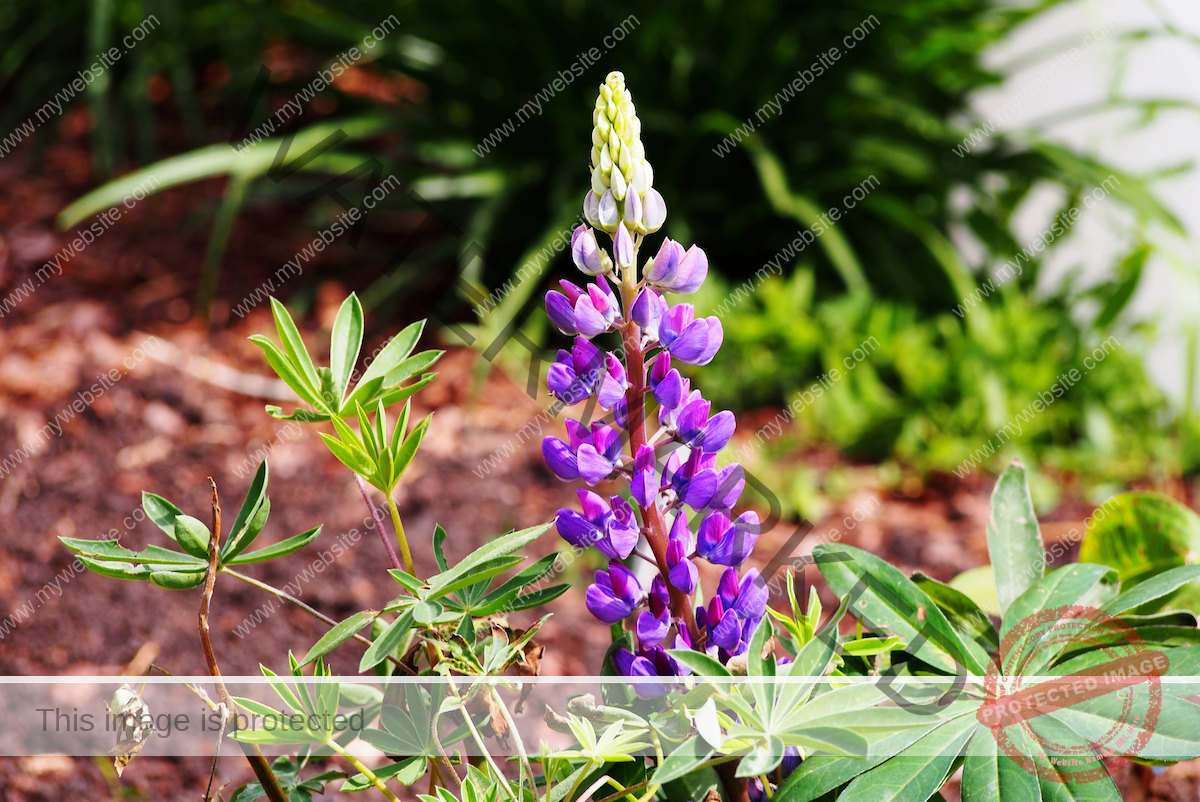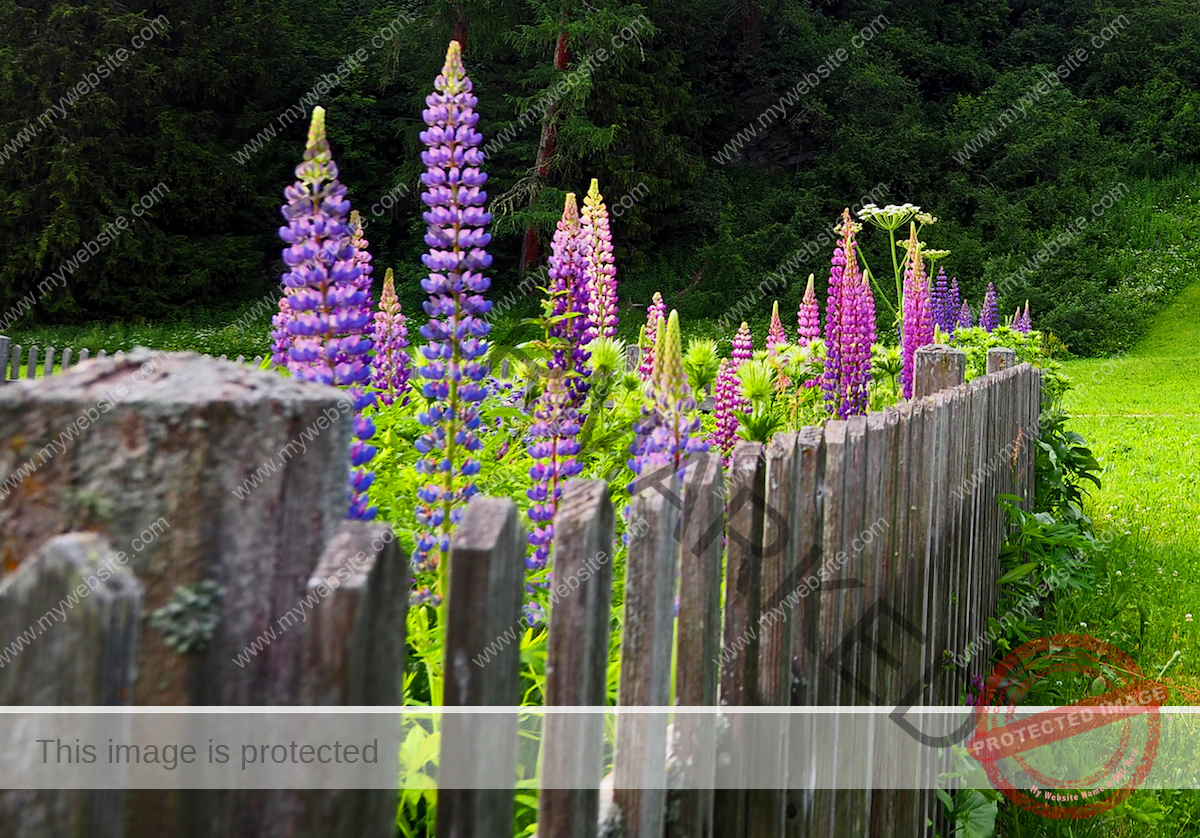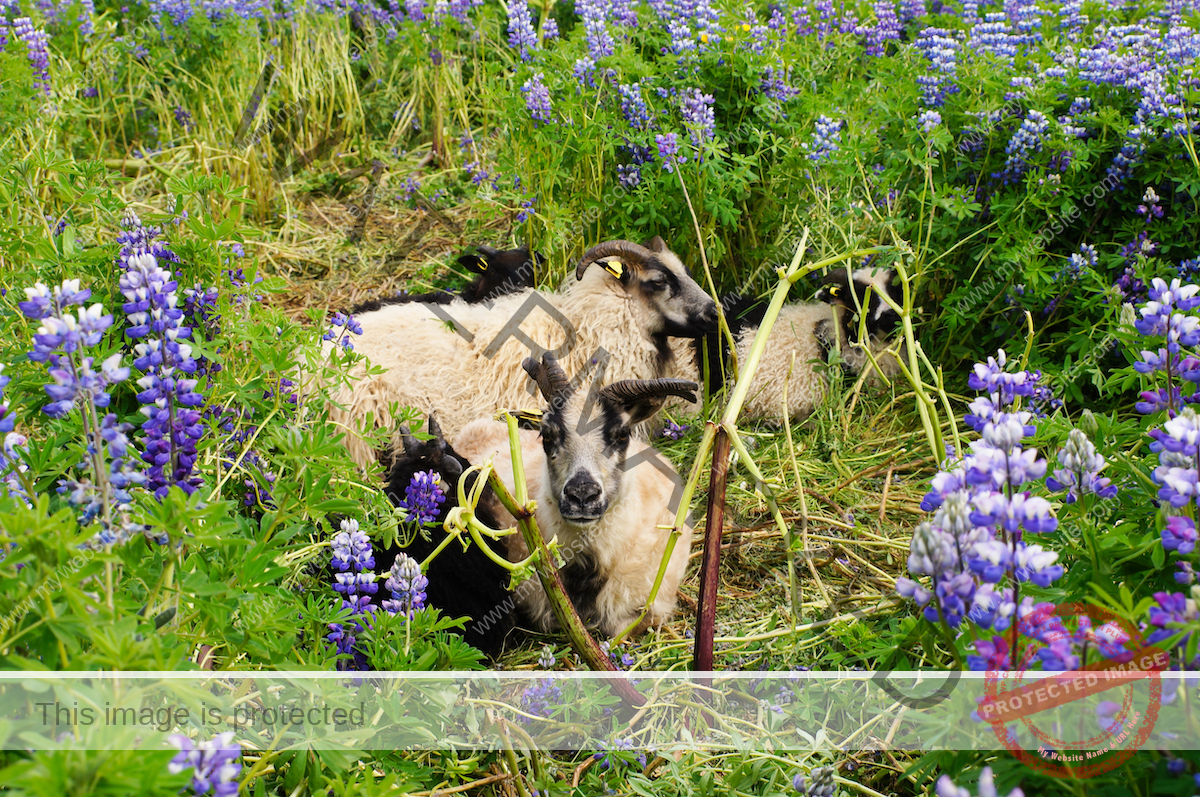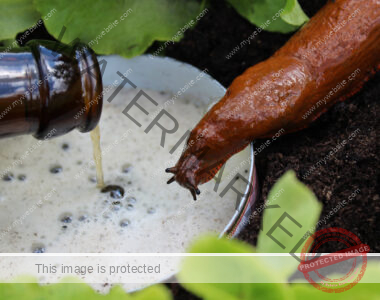
Each spring, tall, lush spikes of brightly colored lupine flowers appear and last through the summer, feeding wildlife and endearing passerines throughout North America. Whether they’re annual species like bluebonnets or perennials, lupines grow best where summers are cool. In addition to its human admirers, the lupine plant attracts pollinators with its white, pink, red, yellow, blue or purple tubular flowers.
Most lupine varieties sold today are hybrids of the wild lupine plant. It is a fast-growing legume in the pea family. north american natives Is a nitrogen fixer which improves the soil. Given the right conditions, proper soil, and the right amount of moisture, lupine plant care is quite easy.
Lupine Care at a Glance

common name: hip
scientific name: lupinus
Soil: moist, sandy, acidic
lights: full sun
Water: Prefers moist soil, but drought tolerant
Eat: little or no fertilizer; avoid nitrogen
Temperature and Humidity: cool spring/summer temperatures, moderate humidity
Spread: seeds or cuttings
Security: poisonous to animals and humans
Lupine Characteristics
Lupine plants grow up to 4 feet tall, spread up to 3 feet, and are characterized by their small flowers held in high, erect spikes. Lupine bloom time lasts from spring to mid-summer, including large splashes of native plants wild flowers They add color to meadows and fields each year—and they also make stunning garden plants and cut flowers. In the South, lupine, commonly known as Texas bluebonnet, forms colorful carpets when in bloom.
Lupine seeds emerge from flat, hairy, pea-like seed pods and are often self-sown.
types of lupine

With over 300 existing species, there are plenty of varieties to choose from. Decide if you want lupine Evergreen Or annual And determine what type of development works best in your circumstances.
- Lupinus polyphyllus: Also called garden lupine, bileaf lupine or Russell hybrid lupine, it is a perennial wild flower from which new hybrids are made. This blue or purple lupine can take a year to bloom and, although it is native to the West, it is considered invasive in some parts of North America.
- Lupinus perennis: This bushy perennial blue lupine, also known as sundial lupine, grows east through the Midwest.
- Lupinus texensis: Also known as Texas bluebonnet, this annual lupine has vibrant indigo flowers with white or yellow petals. They are adapted to the harsh climate of the South, preferring full sun and well-drained (even poor, rocky) soils.
- Lupinus albifrons: Silver lupine is a tall variety that grows 3 to 5 feet tall, with pale blue to purple flowers topped by silver-green leaves.
- Lupinus albus: according to National Library of MedicineWhite lupine is being studied for the ability of its high levels of protein to lower blood sugar and improve insulin sensitivity.
- Lupinus angustifolius: Sometimes called narrowleaf lupine, this is another tall variety growing up to 5 feet tall. Despite its beautiful blue flowers, it is more popularly grown for agriculture than in gardens.
Selecting soil for lupine
The secret of how to grow lupine plants lies in the soil. They prefer organically rich or loose, sandy, well-drained soils that have a pH that is neutral to slightly acidic, although they can also live in very acidic soils. They do not tolerate heavy clay or clay soils unless heavily amended with compost, and they do not like wet conditions.
Due to lack of phosphorus in the soil, fewer flowers will bloom. Because lupines prefer cool temperatures and cool soil, a layer of mulch can help retain moisture in the soil, keeping the lupine roots cool.
Because they are a large root legume, they not only help break up heavy garden soil but can also convert atmospheric nitrogen into a form accessible to plants.
perfect light

Full sun will keep the beautiful lupine healthy, happy and blooming. They should get 6 to 8 hours of direct sunlight every day. Growing them in open fields like wild varieties ensures that they will get adequate amount of sunlight. If planted in flower beds, pruning back overhanging branches and nearby bushes helps ensure they will get the sunlight they need.
Although lupines can survive in partial shade (4 to 6 hours of sunlight per day), they will not produce as many flowers. However, if grown in a hot southern climate, they may benefit from light afternoon shade.
watering lupine
Lupines enjoy regular watering. If they do not receive enough rainfall to keep the soil moist, it is wise to water them weekly. Moderate watering is sufficient; The soil should dry between watering. Lupines don’t like waterlogged soil, which can open the door to disease.
Although perennial lupines are drought tolerant once established and rarely require additional water, they may benefit from watering during dry weather. Less watering may reduce the number of flowers.
To reduce the amount of water that remains on the leaves for a long period of time, plants should be watered at the base rather than from the top.
fertilizing lupine
Wild lupines grow in areas of low soil fertility, so it’s no surprise that lupines require little or no fertilizer. In fact, too much fertilizer triggers foliage growth at the expense of flowers. However, adding acidic, phosphorus-heavy fertilizer may benefit lupine plantings by reducing the pH of alkaline soils.
Lupines may benefit from a layer of compost applied in spring. This not only provides nutrients, but also helps keep the plant’s roots cool.
setting temperature and humidity

Cool spring and summer temperatures provide the best growing conditions for lupines, which do not bloom well in the hot, humid climate of the southern US. To help them recover from the heat of summer afternoons in hot climates, lupins can be planted in those areas. Get afternoon shade, although don’t expect as many blooms in low sunlight. They should be treated as a hardy annual in warm climates, meaning they can be sown in the fall and kept out over the winter.
Lupines typically grown in USDA hardiness zones 4 through 8 will die back after frost, at which time you’ll want to cut back their stalks and cover the plants with a protective layer of mulch.
Lupine propagation
Although lupines can be propagated by basal cuttings or division, growing lupines from seed is the most common method because it is easier. However, lupins grown from seed usually do not flower until the second year.
Knowing how to germinate lupine seeds starts with removing the hard seed coat or soaking the seeds overnight and also includes knowing when to sow lupine seeds. The best time for direct sowing is late spring or fall as lupine plants do not transplant easily.
For basal cuttings, wait until the new growth from the top is at least 6 inches long before taking the cutting. Cut off at least half of the leaf and place in a sterile, loose potting mix kept between 60 and 65 degrees Fahrenheit.
Division is a last resort for propagation as lupines do not like their roots disturbed, but if you choose this method, wait until the plants have bloomed. Divide the fleshy crown so that there are at least three growth buds on each division.
security considerations

Lupine plants are not poisonous when touched and do not cause contact dermatitis; However, consumption of lupine has low severity levels of toxicity to humans and animals. North Carolina State University Extension However generally, they are poisonous only when eaten in large quantities. Symptoms include respiratory depression, slow heartbeat, drowsiness, and convulsions.
Some varieties can be toxic to cattle and sheep, resulting in blindness, convulsions, and heavy or difficult breathing. Lupine when eaten between forty and seventy days of pregnancy can cause “crooked calf” disease, resulting in calves with deformities and twisted limbs. For this reason, wild lupine is considered a noxious weed in some areas of the US.
Potential pests and diseases
Diseases include anthracnose, blight, brown spot, leaf spot, powdery mildew, root and crown rot, rust, wilt and various viruses. Fungal diseases commonly occur when they are propagated by cuttings. Anthracnose causes root rot and causes plant wilting and death. It occurs in cool, moist conditions and is especially hard on young plants. Remove and destroy affected plants and avoid growing lupine in that location for several years to give the spores time to die. Powdery mildew occurs after overhead watering and poor air circulation, especially if plants are crowded.
Common pests include aphids, slugs, snails and thrips. Lupines are especially sensitive to aphids in spring. Horticultural oils or insecticides are usually effective. However, despite being wild flowers, many lupine varieties can be grown as Deer-Resistant Garden Plants,
FAQs About Lupine Care
Increase the amount of light, make sure they are getting enough water, check to see if there is enough phosphorus and deadhead in the soil.
Flowers that bloom in late spring or early summer and that prefer acidic soil make good companions. Try tulips, Shasta daisies, alliums, daffodils and California poppies.
Most varieties are considered short-lived perennials, meaning they will have vigorous growth for 2 to 3 years. However, they self-sow and can continue to produce new plants.



